Imagine a garden designed to focus on creating natural wildlife habitat. Why not eliminate turf grass from your own garden and replace it with trees, shrubs, perennials, and annuals that benefit wildlife? Welcome to Naturescaping, a method of landscaping that allows people and nature to coexist. By growing appropriate plants, especially natives, and adopting a few new practices, you can attract insects, birds, and other wildlife to your garden. 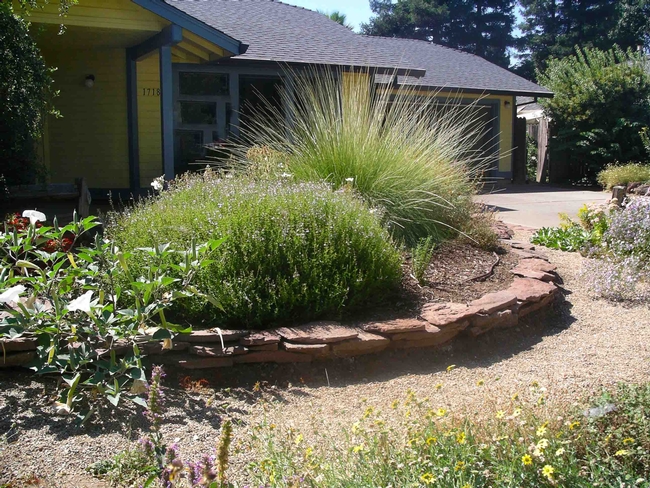
Reduce or eliminate your lawn. Lawns can provide an attractive surface where people and pets can play or just relax. But lawns consume a lot of resources, including large quantities of water for irrigation, as well as the energy needed to manufacture fertilizer and herbicides and to power lawnmowers. At the same time, lawns contribute little of value to wildlife (e.g. food, shelter, or nesting material). If you have a lawn, is it being used enough to justify all the time and resources required to maintain it? If not, choose other plantings that will provide better habitat for wildlife.
Reduce or eliminate pesticide use. 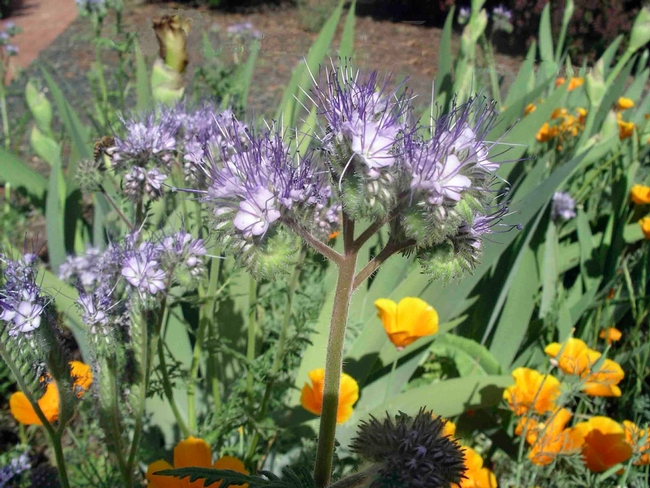
Add native plants to the garden. Insects coevolved with native plants, and those plants provide good quality food for them. Non-native plants don't always contribute the same value to local wildlife. Native plants are also adapted to our local soils and climate. There is no need to rip out all your non-native plants, though. Just watch the non-natives for evidence of use by wildlife, such as pollinators visiting the flowers; insects, birds or small mammals eating seeds, berries or leaves; or animals sheltering there. Non-native plants that don't exhibit any of these signs are prime candidates for removal and replacement by a more useful native plant.
Be a little lazy and a little messy. 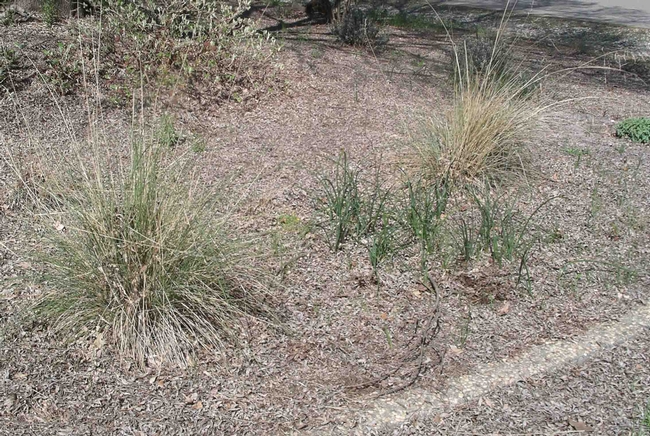
Create vertical habitat layers. Incorporate a variety of plant heights in your garden. Different critters will use different areas of a layered garden. The canopies of large trees provide roosting spots and nest cavities for birds and squirrels. These trees often bear nuts, acorns, or fruits for wildlife to eat. Shrubs and small trees also provide nesting spots and fruits or berries. Herbaceous plants, both annual and perennial, provide seeds, pollen, and nectar. The dried plants are often used as nesting materials. Soil augmented with decaying leaves, wood, and other natural detritus is home to many invertebrates which birds and other small animals feed on.
Provide the critters in your garden with food, water, shelter, and a place to raise their young. 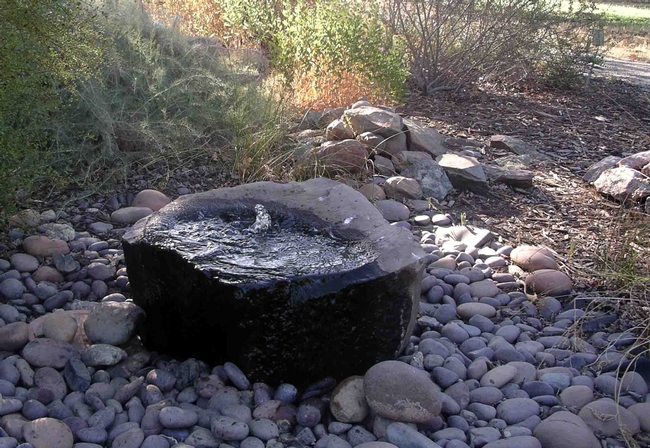
Honeybees are generalists, but some of the native bees are specialists. Native bees vary in size, the way they collect pollen, their tongue length (which determines the kind of flowers they can feast on), and their preferences for flower shape and color. To attract the greatest variety of pollinators, choose at least 20 different species of plants with a variety of flower structures, colors, heights, and blooming periods.
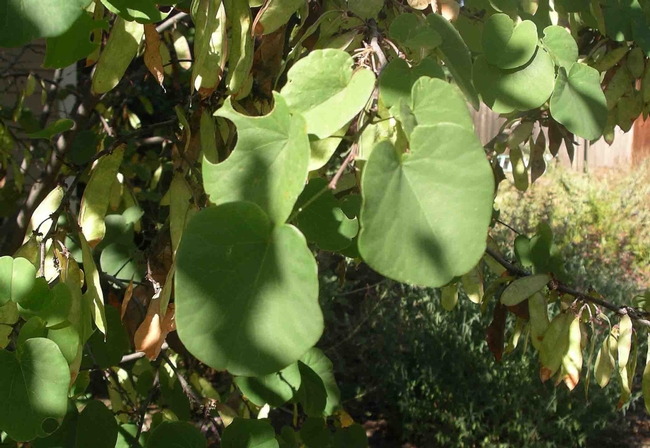
Native bees don't require supplemental water during the summer, but most other critters will benefit from a water source in your garden. This doesn't have to be an elaborate fountain. Simple birdbaths, a shallow dish with wet pebbles, or a soaker hose run for a short period will do. Remember to change water frequently or employ a mechanical device to keep the water flowing, so your water feature does not become a harbor for West Nile Virus-bearing mosquitoes.
Wildlife needs places to hide from predators, to shelter from the rain or sun, to stay cool, and to sleep. A simple pile of rocks is an attractive shelter for lizards. They can sun themselves and keep watch from the top of the pile and then dart into the interior for protection when necessary. Plants that form thickets or have low-hanging branches, brush piles, ground cover, and evergreens can all provide cover. These sheltered areas can also provide wildlife with a safe place to raise their young. Wood, dried stems, grasses, twigs, and tree cavities are valuable nest-building materials for many kinds of creatures. Leafcutter bees construct nests from circles they cut from the perimeter of western redbud or other leaves. Most native bees excavate holes in the ground for their nests. While mulch is helpful in controlling weeds and providing cover for invertebrates, leave a small corner of your yard with bare soil for these ground-nesters to use.
For more information: 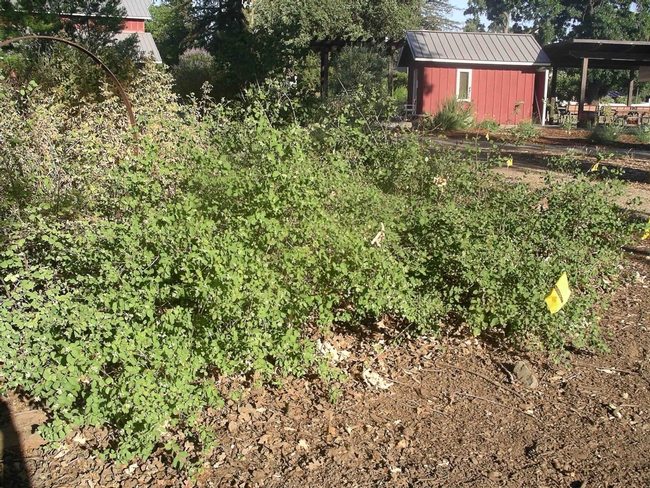
Other resources:
The Xerces Society has a list of California pollinator plants.
The California Native Plant Society has a database, Calscape, of native plants in cultivation along with their cultural requirements and pollinator associations.
New Master Gardener Fall 2021 Workshop Series is about to begin! The Fall Series kicks off in September with brand new workshops on Drought Triage, Fall and Winter Vegetable Gardening, and Berry and Grape Care, plus workshops that have been popular in the past, including Irrigation and Maintenance, Propagation, and Garden Guide and Journaling. Workshops are free and will take place in person; most will be held outdoors at the Master Gardener Demonstration Garden at Patrick Ranch. Numbers of participants will be limited; Covid safety protocols will be followed. For more information and to registration (required), visit our workshop webpage.
UC Master Gardeners of Butte County are part of the University of California Cooperative Extension (UCCE) system. To learn more about us and our upcoming events, and for help with gardening in our area, visit our website. If you have a gardening question or problem, email the Hotline at mgbutte@ucanr.edu (preferred) or call (530) 538-7201.